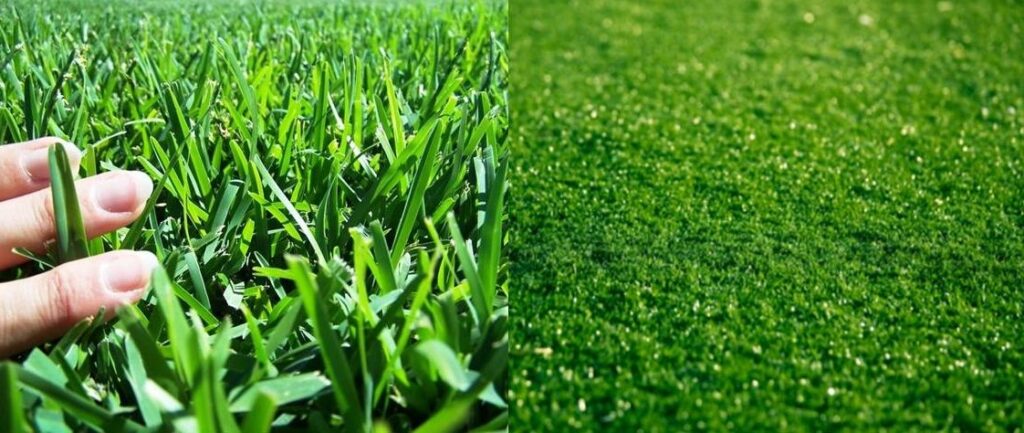That is the question. And it’s a good question. Artificial grass has been making up more ground in recent years as it has replaced natural grass on playing fields and even in backyards and garden areas. So which one is better? We thought we’d take a deeper look at this subject and come up with a list of the good and bad for each.
Although no answer is definitely the right or wrong one, eventually it will be up to you. Let’s start with good old natural grass.
Live Turf Lawn
For many, there’s nothing like the smell of freshly cut grass. Or what it looks like when it’s at its most full and lush time of the year. Unfortunately it doesn’t always stay like that and homeowners and maintenance people alike spend a good amount of time getting it looking just right.
Pro’s
- You can’t beat the look and feel of a real lawn. When it’s at its best, not only does it look good, but it feels good to walk in or even roll around in.
- It’s real…and that’s what most lawns and ballfields have been for many years and with a little maintenance have always performed as expected.
- Growing real grass is a low cost installation. You get some decent soil, some grass seed and some water and you’re ready to go.
Con’s
- There is more than a little maintenance with natural grass. From mowing, to watering, to fertilizing, you are putting time, effort and money into the upkeep of your lawn.
- Natural grass is not an eco-friendly lawn. Between the water, pesticides, gas and electricity to keep it in tip-top shape, you are not the environments friend.
- The amount of traffic your lawn gets from children or pets will most likely create bare or discolored areas or muddy zones from overuse.
Artificial Turf
There have been some very good advances in artificial turf and we are seeing more and more yards and playing fields using it. Let’s take a look at some of the pros and cons.
Pro’s
- Lower maintenance costs with artificial turf. No need to water, cut or fertilize which will save you a few dollars and give you a lot of free time back.
- Much more durable than natural grass. Artificial turf can hold up to heavy use and weather conditions and maintain its look and consistency.
- Because it won’t create muddy patches or holes and ruts, people are less likely to be hurt while playing on this surface.
- Easy to clean up. Synthetic grass can easily be cleaned and raked like a real lawn.
- The amount of water and chemicals needed to keep natural grass healthy and green is concerning to those who enjoy an eco-friendly lifestyle. Artificial turf requires zero pesticides to keep it green and absolutely no gasoline or electricity is required to keep it at the ideal length.
Con’s
- The initial costs to install artificial grass can be high, but are offset over time by the savings on water, gas, electricity and fertilizer, not to mention the cost of your time.
- Artificial turf can absorb heat and can get a bit hot on extremely warm days.
- You won’t get the smell and feel of natural grass but you also won’t get the maintenance and upkeep.
- Synthetic grass will last many years but the normal shelf life can be up to 15 years.
Additional Information on Artificial Turf
By materials, artificial turf is divided into 3 main groups: polypropylene, polyamide, and polyethylene. Polypropylene is used for sports fields and lawns. Polyamide is used for lawns and gardens; this synthetic turf needs to be irrigated with water. Polyethylene is the most popular new type of material, which is used for sports fields and gardens. It is very strong and durable.
Pile height is the average height of the yarns measured from the top of the backing layer.
Synthetic Grass utilizes infill materials like crumb rubber and sand to get a better appearance, improved performance, and greater durability. Therefore, part of the pile height will be covered with infill. Sport products are usually infilled up to 70 % of the pile height.
For sport applications, the pile height is extremely important because the higher the pile height, the greater the amount of infill material that can be applied. Resulting in a surface with better performance and shock absorption.
The infill will add weight and will also protect the backing from too much UV exposure. The color of your grass can possibly be affected by UV exposure although there are protective measures for your fibers that you can ask about.

